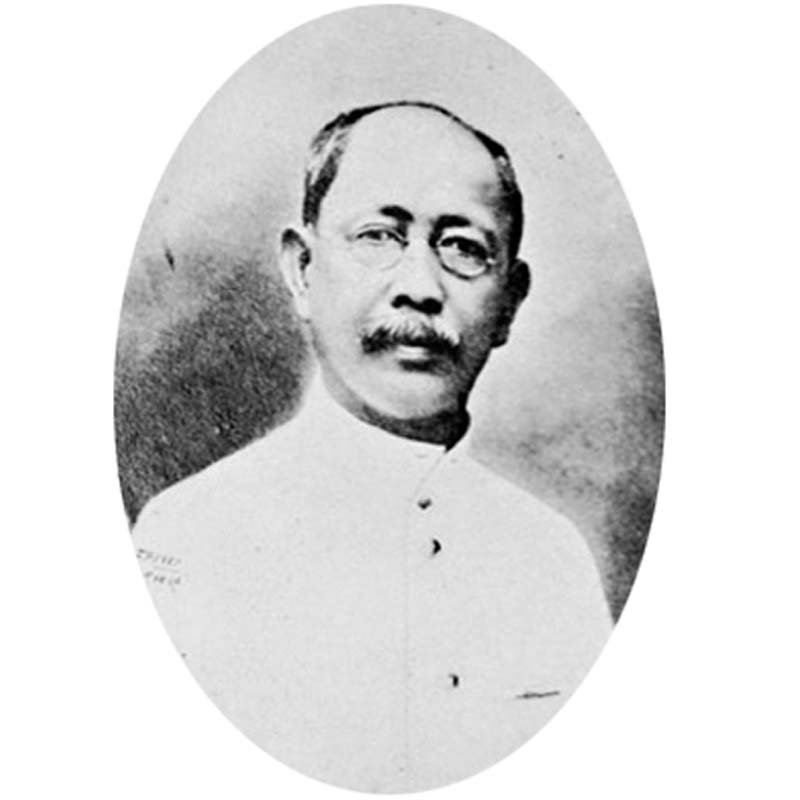Thanks to Dr. Santiago Albano Pilar’s coffee table book The Life and Art of Isabelo Tampinco (2004), the most “unheralded” Filipino artist in the late 18th century, “the forgotten master” Isabelo Tampinco, has become known to people like us interested in Philippine culture and history. Tampico was the master in the art of sculpting as Juan Luna was in painting. Tampinco, in short, is the “Juan Luna of sculpture.”
Among the prominent works of Tampinco are the facade of the Manila Cathedral, high relief on the molave door of the Santo Domingo Church in Quezon City, main altars of the Saint William’s Cathedral in Laoag, wood carvings of the San Agustin Church in Intramuros, interior of the Old Senate Session Hall of the National Museum and Malacañang’s entablature.
Tampinco’s works won him prestigious awards and recognitions, among them the medal of merito civil for his sculptures (1880), silver medal at the tercentenary celebrations of Saint Theresa of Avila (1882), silver medal and diploma of honor at the Philippine Exposition in Madrid (1887), gold medal at the Exposicion Universal de Barcelona (1888), gold medal at the Exposicion de Filipinas (1895) and gold medal at the St. Louis Exposition (1904).
But what makes Tampinco so unique among his contemporaries such as Jose Rizal and Juan Luna is that he never went abroad to study. He was a totally homegrown artist. He trained as a student of sculpture at the Escuela de Artes y Oficios, where Rizal was one of his classmates. He knew Rizal personally. In fact, the national hero admired his works.
What makes us most interested in Isabelo Tampinco is that he was a Chinese mestizo born in Binondo on Nov. 19, 1850.
His parents were Leoncio de los Reyes Tampinco, a Chinese mestizo himself, and Maria Matic Justa de Lacandola, a descendant of Raja Lankandula who ruled Manila in 1571. They married at Santa Cruz Church on Sept. 15, 1849. Leoncio’s father, Manuel, who wed Dominga de los Reyes, stated in his marriage papers that he was “mestizo natural y resident de Binondo.” Our own hunch is Manuel was a first-generation pure Chinese immigrant to the Philippines. It is likely he was the first to use the surname Tampinco.
What is amazing is Tampinco’s father, Leoncio, was himself a sculptor and wood carver. His work can still be found at the Malabon Parish Church. Tampinco’s grandfather, Manuel, on the other hand, was a “builder of the Cathedral of Lipa,” having been a mason or a carpenter.
Among Tampinco’s own children, sons Angel and Vidal were sculptors. In fact, the interior of the Old Senate Session Hall and all sculptures there were the collective works of the Tampinco father and sons. That makes the Tampinco family a three-generation sculptor family. That makes them more unique and extraordinary.
Tampinco passed away on Jan. 20, 1933.
Dr. Santiago Albano Pilar is a professor of art history at the University of the Philippines College of Fine Arts. He spent 10 years of in-depth research on Tampinco’s life and works. A great work well done indeed. Without his book on Tampinco, we would never have known that there was such a great Chinese mestizo sculptor in the Philippines, the “Juan Luna of sculpture!” Maraming salamat.
